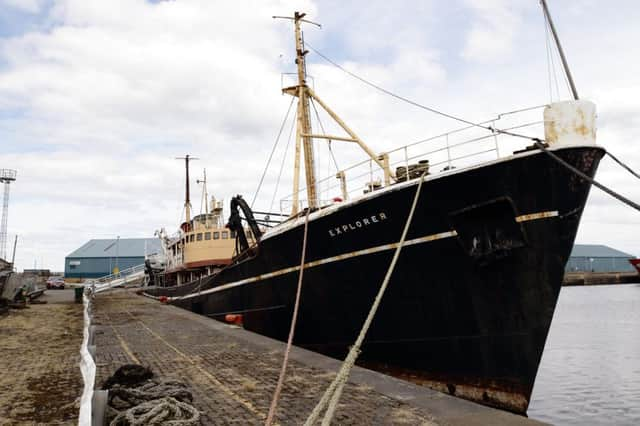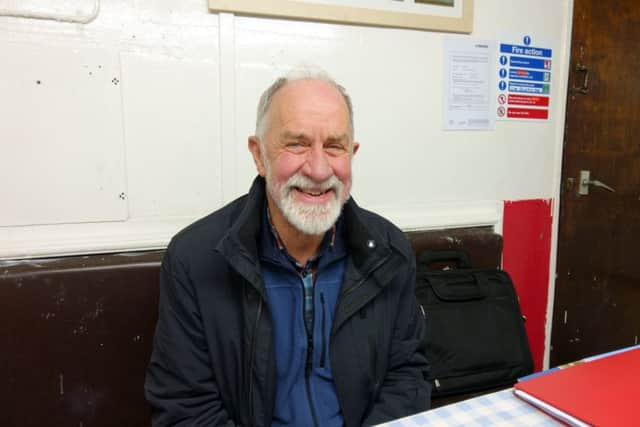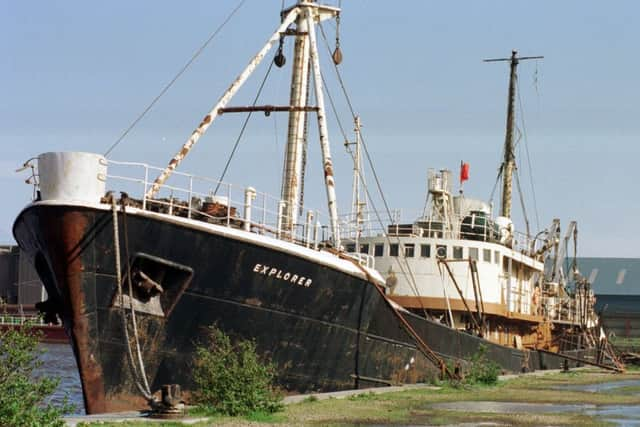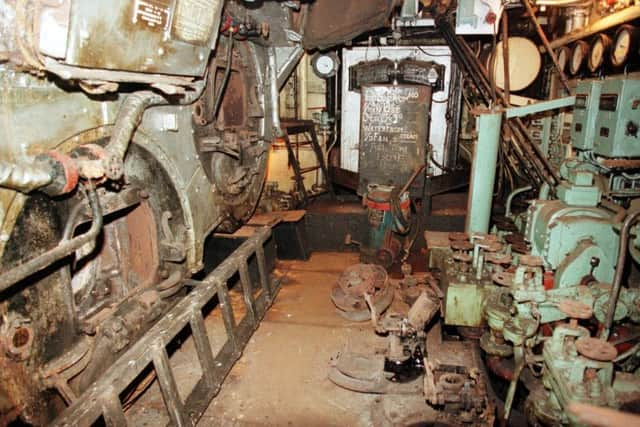Leith spy ship could be transformed into maritime museum with help of new Lottery grant


And now, plans are set to be brought forward to restore a historic steam trawler thought to be one of the last surviving vessels of its kind to its former glory after a group committed to the project received a National Lottery funding grant.
The SS Explorer, currently moored in Leith, spent almost 30 years as a maritime research ship allowing marine biologists to study the effect of trawling on fishing stocks in Scotland’s waters before being decommissioned in 1984.
Advertisement
Hide AdAdvertisement
Hide AdBut it is hoped the vessel - which has survived two trips to the breakers’ yard - can be brought back to life and transformed into a museum celebrating the area’s maritime heritage.


Andy Marjoribanks, chairman of the SS Explorer Preservation Society, revealed the group now have ambitious plans for the ship after receiving a £10,000 funding boost to officially set up governance of the organisation.
Retired teacher Andy, 69, told the Evening News: “Everyone knows Leith as the home of the Royal Yacht Britannia, but other than that, there isn’t very much in the way of Leith’s maritime history being explored, so hopefully we can help plug that gap.”
“The ship has been in Leith for more than 20 years and in that time, there has been basic work, warding off the effects of rust, a few tidy ups, but nothing particularly extensive. The plan now is to get the story of the SS Explorer out there and hopefully start restoring it with as many original features as possible.”
Advertisement
Hide AdAdvertisement
Hide AdAndy continued: “Obviously, that is a little way off, but what we have with the funding is a platform to build.”


While the ship became renowned for its contribution to marine science, it was the Explorer’s role in daring Cold War espionage that made it unique.
Signals Officer John ‘Ian’ Steven joined the crew prior to an expedition in the Barents Sea, however unbeknownst to most of the crew members, he had been recruited into naval intelligence weeks earlier.
Before the voyage, secret specialist equipment had been fitted to the ship to help monitor the movement of Soviet submarines below the waves.
Advertisement
Hide AdAdvertisement
Hide AdWhen the ship returned to port in Aberdeen following the expedition, the equipment was swiftly taken away by espionage experts for further analysis.


A play based on the life of the ship, ‘Sea Changes,’ will be performed in Citadel Arts Theatre’s base in Leith Dockers Club in June this year as part of Leith Festival, while an appeal has also been launched for former crew members to come forward and share their memories for an upcoming book.
Launched in June 1955, it was one of the last vessels built by the renowned Aberdeen shipbuilding firm of Alexander Hall & Co before the company was bought out.
It later captured some of the first underwater photographs off Scotland by tying 35mm cameras in waterproof boxes to trawler nets as part of a marine discovery voyage and at its peak had 38 crew members including researchers and trawlermen on board.
Advertisement
Hide AdAdvertisement
Hide AdThe vessel was deemed too inefficient to run following technological advances and was set to be scrapped before it was purchased by the society and relocated to Leith in 1996.
Andy said: “Given how important the Explorer was to scientific research, it is absolutely astonishing that it was going to be scrapped.”
“It was only the dedication of the society and its members that saved it from being completely ripped apart, so to fully restore it would be a monumental achievement.”
“We have put it back together as best we can, but we are operating on a limited budget and its estimated the cost properly executing our vision would be around £3million, so we have a long way to go.”